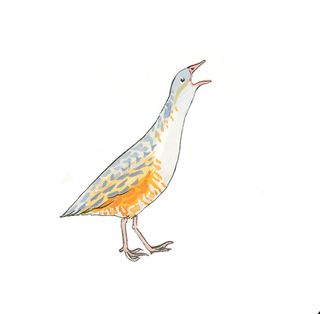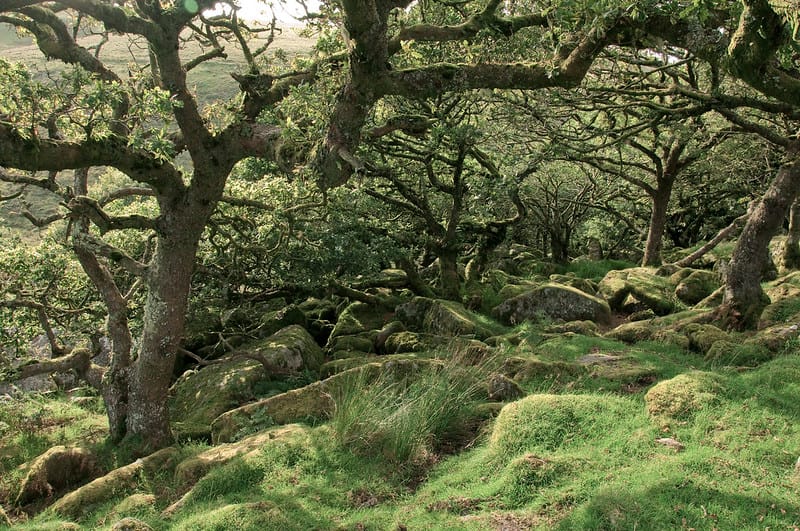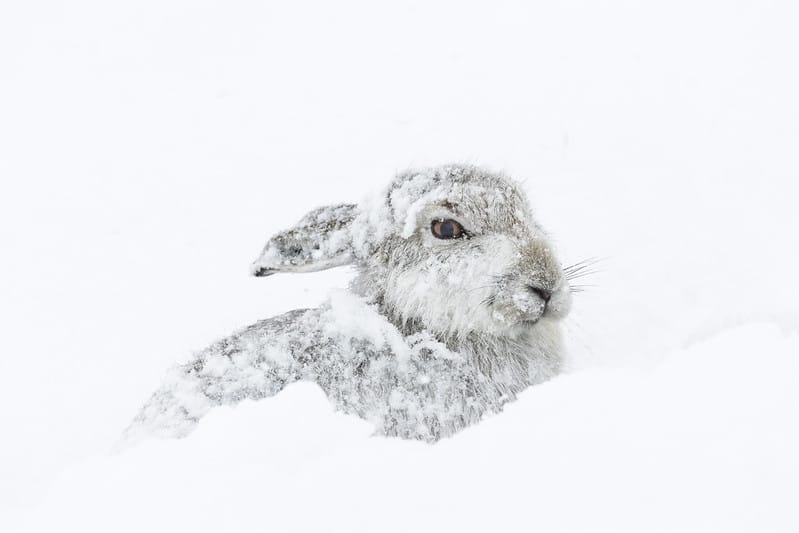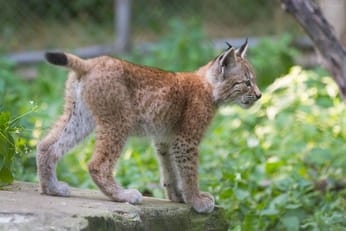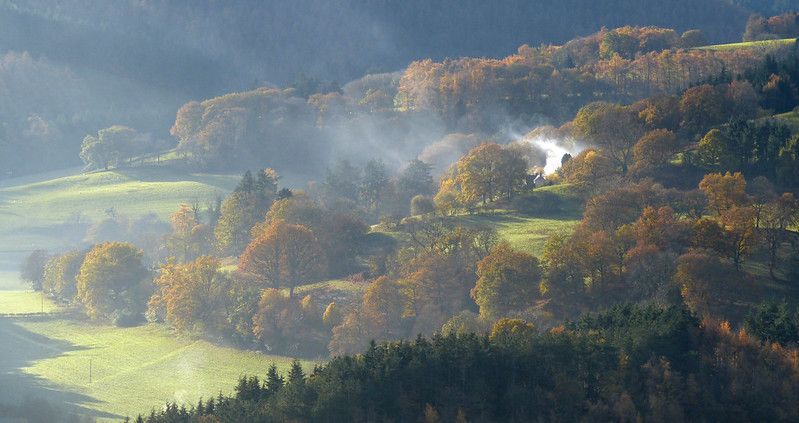
New National Park & Psychedelic Connection
The latest news on nature and conservation in Britain.
In case you missed it, we just announced the relaunch of our features section. As part of that, we have a special offer running: sign up in the next four days, and you will get a full year's membership for just £30 (usual cost £50) or six months for £3 per month (usual cost £5).
As well as supporting our in-depth environmental journalism, members get access to our weekly digests – a.k.a., the newsletter that sits before you now. For one week only, I am sending it to the entire mailing list, so you can have a read and decide whether you would like to receive it again.
National news
Parks | The Welsh Government has commissioned Natural Resources Wales to evaluate the case for a new national park around the Clwydian Range and Dee Valley Area of Outstanding National Beauty. The controversial proposal has been a long time in the making – Inkcap Journal covered the background, and the debate around the ecological merits of the idea, in one of its recent longreads (also available in Welsh). Project manager Ash Pearce said that the timeline for its designation was challenging – the last time such a project was undertaken was in the 1950s, and it took around a decade to complete. This time, with efforts backed by government funding and new technology, he hopes the process will be complete by 2026. “There will be stakeholder engagement and a public consultation to ensure that we get the best result for the people of Wales,” he said.
Hedgerows | Environmental organisations are warning that England’s hedgerows are under threat as old EU rules are scrapped. Under the EU’s basic payment scheme (BPS), hedgerows were protected by requirements that farmers could not plough to their base – thus damaging the roots – or use fertilisers or pesticides within two metres. It also prevented hedgerows being cut in the bird nesting season between March and August. However, the government plans to drop these requirements at the end of the year. Organisations including the RSPB and CPRE are calling on the government to keep or replace the protections. Alice Groom, of the RSPB, said: “The future of over 547,000km of hedgerow alongside agricultural land is now under threat. As spaces for wildlife we believe hedgerows are an essential part of creating a vibrant countryside”. The Guardian covered the news.
Innovation | Defra has announced the fifty successful projects that will receive a share of £30m under the Farming Innovation Programme. The fund is designed to support cutting-edge agricultural research that will create a more sustainable sector, boost food production and contribute toward net-zero targets. The projects supported include genetics research to reduce methane emissions in cattle by 17% per generation; investigations into the use of drones and AI to monitor animals for disease; and efforts to develop biopesticides using fungal strains to tackle pests in wheat crops. The BBC took a closer look at one funded project: the development of tasteless peas, to be used as a protein-rich meat alternative, replacing imported soya beans. Farming UK, Farming Weekly and Agriland covered the news.
In other news:
- Experts have warned that the oak processionary moth, which is harmful to both people and trees, has spread across the southeast of England, reports the Times.
- Natural England has appointed Shaun the Sheep as the new champion of the Countryside Code.
- The NHS has joined forces with the Wildlife Trusts to promote the Trusts’ ‘30 Days Wild’ nature challenge.
- A £3m partnership between the RSPB, BirdLife International and the Ecological Restoration Fund will protect landscapes along the African-Eurasian Flyway.
- Survival expert and TV presenter Ray Mears has called for legal protection for the UK’s ancient woodlands, reports the Times.
- The Forestry Commission has reopened the HS2 Woodland Fund, with £3.25m available to support woodland creation and restoration along the HS2 route.
Across the country
Isle of Wight | A rewilding scheme on the Isle of Wight is showing dramatic results just two years after it began, according to the local Wildlife Trust. In particular, the results are the first in the UK to show such a significant decrease in soil mineral nitrogen at a rewilding project, with a drop of 47%. Little Duxmore was previously an arable farm subject to high levels of fertiliser inputs. Through the provision of nitrate credits, the rewilding programme is offsetting development in the Solent catchment, and helping to address nitrate pollution in the Solent. Chief executive of the Trust, Debbie Tann, said: "This is a new realm of science for the UK as other rewilding schemes are underway, but we are the first to undertake such rigorous monitoring. These results are very significant for the fight against pollution here on the south coast."
Wye | Natural England has downgraded the health rating of the River Wye to “unfavourable – declining”. An assessment of its key wildlife found that salmon, crayfish and aquatic plants were all declining. The Wildlife Trusts have called the deterioration a “shocking failure” by the authorities meant to protect the river, and highlighted the escalation of nutrient pollution from chicken units, livestock farming and sewage. The Trusts are calling for the Welsh and English governments to place an immediate moratorium on any new or extended intensive livestock production units in the catchment area, and also for farmers and supermarkets to work with local stakeholders to halt the pollution. Environment secretary Thérèse Coffey held a roundtable discussion on Tuesday to hear about potential improvements. The BBC, the Guardian and the Times reported the news.
York | York groundsel went extinct in the wild over 30 years ago, but now researchers have resurrected the plant in Britain’s first ever de-extinction event. The cheery yellow flower was only ever found in its namesake city: it evolved after non-native Oxford ragwort hybridised with native groundsel. However, liberal application of weed killer eliminated it in the early 1990s, with only three plants surviving in pots at the University of York. These annual plants soon died, but a precious clutch of seeds was saved at Kew’s Millennium Seed Bank. Thanks to a Natural England grant, 100 seeds were planted in a special polytunnel last year, where 98 germinated. In February, thousands of new seeds were sown in plots around York, and this week the plants began to flower in the wild for the first time in 32 years. The Guardian covered the story.
Elsewhere:
- A golf club in Llanymynech is undertaking a grassland restoration project to help 30 species of butterfly, reports the Guardian.
- A 100-year restoration project on a former dairy farm in Dumfries & Galloway is already showing signs of new life after only two years, reports the Herald.
- A project on the Purbeck Heaths is using free-ranging domestic grazers to mimic the impact of their ancient ancestors, reports the Guardian. Inkcap Journal covered the rewilding efforts last year.
- Comedians Steve Coogan and Lee Mack joined a pollution protest at Lake Windermere, reports the BBC and the Telegraph.
- Conservationists and volunteers are preparing to undertake the first cliff-nesting seabird count on the archipelago of St Kilda in more than 20 years, reports the Herald.
- Plymouth City Council will build a network of ponds in its Central Park to capture rainwater and create homes for wildlife, reports the Plymouth Herald.
- Chair of Natural England, Tony Juniper, has mourned the cutting of a sea of wildflowers on Midsummer Common in Cambridge, reports the Times.
- NatureScot says the “pioneering” £22m Natural and Cultural Heritage Fund will help to showcase the outstanding wildlife and culture of the Highlands and Islands. The Herald reported on the projects.
- The only breeding pair of ospreys on England’s south coast have successfully hatched two chicks, reports the BBC.
- The smoke from a wildfire in Cannich is now visible from space, reports the Independent. It has damaged the Corrimony nature reserve, reports the BBC.
- More than 350 people took part in a mass swim in the River Stour to support the campaign for bathing water status in Manningtree, Essex, reports the BBC.
- The Freshwater Habitats Trust has opened registration for its ‘GroWet’ project, where local residents help nurture rare plants to be planted in Oxfordshire’s wetlands.
- Twitchers who visited Northumberland to see the UK’s first grey-headed lapwing raised almost £1,500 for a local nature reserve, reports BirdGuides.
- A tiny forest planted two years ago in Screveton, Nottinghamshire, has “exceeded expectations” and developed into a self-sustaining community, reports the BBC.
- Natural Resources Wales is launching a project in the North Anglesey SAC to monitor the impact of noise on marine mammals.
- Leicestershire County Council’s tree planting scheme has reached a milestone of a quarter of a million trees, reports the BBC.
Reports
Birds | The British Trust for Ornithology has published the results of the 2022 Breeding Bird Survey, tracking population trends for 118 bird species in the UK. Overall, the results show that 37 species have significantly increased since 1994, whilst 41 species have significantly declined. Some declining species are too rare to be monitored thoroughly, so may not be included. Perhaps most notably, this year’s results saw positive signs for the farmland species corn bunting and skylark, which have experienced severe declines in the past. Skylark numbers have increased by 9% in the last decade, and by nearly 20% in the last five years in south-east England and the East Midlands. Mark Avery has, however, issued a reminder of the dangers of shifting baseline syndrome. "If we didn’t have the data, collected by volunteers, you young people out there would probably not believe how common Skylarks were in the olden days," he writes. BirdGuides and the JNCC summarised the results.

Ponds | A report by Natural England lays out the results of its GenePools project – a citizen science experiment conducted in collaboration with the Natural History Museum and others to assess the biodiversity of garden ponds using DNA metabarcoding. The research, however, appears to have been somewhat undermined by suboptimal decision-making. Participants complained that the sampling kits were sent out via Royal Mail over the Christmas period, meaning that many did not arrive in time – “which in hindsight was a good point”, the authors concede. Additionally, conducting the research in winter meant that many species that are common during the summer were temporarily absent, meaning that the snapshot provided by the samples was partial at best. Contamination with earthworm DNA was also a problem that could have been avoided. Better luck next time?
Offsetting | An in-depth paper for Community Land Scotland, written by the campaigner and reformer Alastair McIntosh, provides a wealth of insights into the issue of carbon offsetting and its impacts on nature and community empowerment in Scotland. The wide-ranging discussion encompasses green lairds, greenwashing, rewilding and the Gaelic concept of dùthchas. It’s clear that McIntosh takes a dim view of the sale of carbon credits, which he believes allows polluters to evade responsibility for their actions and to sidestep the pressing social issues facing the Highlands. “Offsetting as an approach, can pander to the vanity of high consumers of carbon and other emissions,” he writes in the executive summary. “It allows them in a style of modern-day religious indulgences to atone for their carbon ‘sins.’” The Press and Journal covered the report.
Science
Connectedness | Psychedelic drugs, including magic mushrooms and LSD, are able to “elicit a connection with nature that is passionate and protective, even among those who were not previously nature oriented,” according to a study published in Psychoactives. The findings are based on a survey of 272 people, whose responses were sometimes pleasingly poetic. “I melt with the universe and I felt trees and animals melting with my body,” said one. Some experienced communication with other species, while others felt themselves transformed into other natural entities. Some described a shift in perspective and intense feelings of awe, and others even adopted greener habits as a result of their experiences. The study noted, however, that a positive experience is not guaranteed, and that a cautious and responsible approach is required.
Butterflies | It has always been difficult to understand the impacts of privately-owned gardens on biodiversity due to restrictions in access. However, citizen scientists can collect data that is otherwise beyond the reach of traditional researchers. Researchers from the British Trust for Ornithology and Butterfly Conservation have joined forces to analyse butterfly records collected by the public during the Garden BirdWatch project. They found that half the species that they studied had increased in gardens between 2007 and 2020, faring better in some cases than across the wider countryside, raising the question of whether garden butterfly numbers are contributing to population growth overall for some species. The paper was published in Insect Conservation and Diversity, and the findings were covered by BirdGuides.

Brighton | Different people want different things from nature. By considering the cultural, social and biological benefits of natural places, restorationists can ensure they meet the needs of a wide variety of stakeholders. A paper published in Sustainability Science puts this approach into practice. Researchers asked conservationists and farmers for their thoughts on the various options available – including passive and agricultural rewilding, targeted restoration, regenerative agriculture and the continuation of tenant farming – for the Downland Estate in Brighton and Hove. Opinions varied, suggesting a mosaic of land uses would be the most successful future management strategy. “The next challenge is addressing the geography of where and how much land is given to different management,” the authors conclude.
Driftwood
Biodiversity | In a comment piece in Nature, researchers argue that ‘loss and damage’ funds should apply to biodiversity loss as well as climate impacts. Last year at COP27, a landmark agreement established a fund dedicated to providing financial assistance to less economically developed nations struck by climate impacts that they had done little to cause. Habitat loss and overexploitation of natural resources in poor countries is also triggered by consumption in the global north, say the researchers, but these losses and damages aren’t covered under the climate agreements. Dr. Dilys Roe, lead author of the paper, said: “The first step is opening up the discussion about this and whether the principle of ‘consumer pays’ is a valid principle in the same way as ‘polluter pays’.” The Guardian covered the research.
Wildness | In a muscular essay for The New York Review, American science journalist David Quammen dissects the meaning of “wildness”. This difficult-to-define quality, he says, depends upon processes, connectivity and scale. “People sometimes imagine that wildness can survive in small or simplified pieces. It cannot,” he writes. “Wildness in its fullest sense has got to be big and complex and interactive and uncontrolled by humans.” As you might expect from the author of the foremost nonfiction book on island biogeography, he meanders into a discussion on how the wilderness has, to its detriment, been chopped up into small pieces by human civilization. He concludes that it is not too late to protect wild places, but that we must reconsider what we eat, how we travel and how many children we produce. The feature is behind a paywall, but can be accessed by registering for a free account.
Teesdale | On Sunday, BBC’s Countryfile paid a visit to Dr. Margaret Bradshaw, the legendary 97-year-old botanist who recently published her life’s work in a book on the special flora of Teesdale. The Northern Echo ran two articles on the botanist: this one tracks the history of the spring gentian, a rare and brilliantly blue plant whose flowers are only visible from mid-May to early June. The second charts Bradshaw’s career, and discusses the botanist’s thoughts for the future of Teesdale's vulnerable plants. She hopes to continue influencing local people to learn about the assemblage. “It’s to try and get people to value it, treasure it, to look after and conserve it,” she says. “They don’t need to be botanists. They just need to like the idea and support it.” Inkcap Journal interviewed Dr. Bradshaw for a feature last year.
Further reading:
- In the Observer, a feature looks at how the rise of “invasivorism” – eating invasive species – is changing British menus. Think squirrel haggis and muntjac deer tartare.
- An article in the Guardian discusses why MEPs are resisting a key new restoration law.
- After winning his libel case, Chris Packham says that laws should be strengthened to protect environmental campaigners from abuse in this Times interview.
- A blog by the Sussex Wildlife Trust has a list of the best places to spot orchids in the UK. A separate post explores the Trust’s project to link the High Weald to the sea.
- A Guardian article delves into why the climate crisis is forcing insects across the globe to migrate to higher ground – and the resulting impact on ecosystems.
- Horticulturist and presenter Monty Don admits that the Chelsea Flower Show is too white and middle class, according to the Telegraph.
- A blog by the RSPB explores the increasingly rare “heathland havens” of the UK.
- Congratulations are in order for author and conservationist Lee Schofield, whose debut book Wild Fell won the prestigious Richard Jeffries Award for nature writing.
- A blog by non-profit organisation Oceana explains why banning industrial sandeel fishing in UK waters is a “no brainer”.
- In the Times, science editor Ben Spencer describes his unsuccessful trip to spot a beaver in east Devon, as well as their positive impact on the local landscape.
- As May comes to an end, Plantlife introduces ‘Let it Bloom June’, and explains how to maintain a space for wildlife during summer.
- In the Guardian, Hannah Stowe lists her top ten books for connecting with nature.
Happy days
Peat | Happy World Peatlands Day to all our readers. To mark the occasion, the South West Peatland Partnership has released STACKS – a creative arts project designed to make you see this underappreciated ecosystem in a new light. The interactive film features three “windows”, which the viewer can shuffle at will, showing abstract peatland textures and photographic film degraded over months within bogs. The visuals are accompanied by field recordings, music and local voices, including the sounds of the bogs themselves. It is definitely on the weirder end of the spectrum, and absolutely worth a watch.
Subscribe to our newsletter
Members receive our premium weekly digest of nature news from across Britain.
Comments
Sign in or become a Inkcap Journal member to join the conversation.
Just enter your email below to get a log in link.

